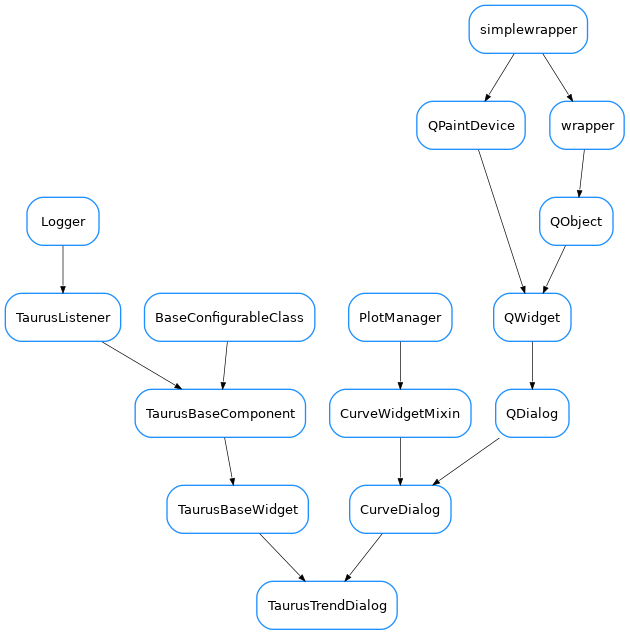TaurusTrendDialog

- class TaurusTrendDialog(parent=None, designMode=False, taurusparam=None, toolbar=True, **kwargs)[source]
A taurus widget for showing trends of scalar data. It is an specialization of
guiqwt.plot.CurveWidget, for displaying trends and offering the expected Taurus interface (e.g. setting models, save/apply configs, drag&drops,…)See also
Import from
taurus.qt.qtgui.extra_guiqwtas:from taurus.qt.qtgui.extra_guiqwt import TaurusTrendDialog
- addModels(modelNames)[source]
Creates TaurusCurveItems (one for each model in modelNames) and attaches them to the plot.
Note
you can also add curves using
add_items().addModels()is only a more Taurus-oriented interface.add_items()gives you more control.- Parameters:
modelNames (sequence<str> or str) – the names of the models to be plotted. For convenience, a string is also accepted (instead of a sequence of strings), in which case the string will be internally converted to a sequence by splitting it on whitespace and commas.
See also
add_item()
- getMaxDataBufferSize()[source]
returns the maximum number of events that can be plotted in the trend
- Returns:
- Return type:
- getUseArchiving()[source]
whether TaurusTrend is looking for data in the archiver when needed
- Returns:
- Return type:
See also
- maxDataBufferSize
returns the maximum number of events that can be plotted in the trend
- Returns:
- Return type:
- model
reimplemented from
TaurusBaseWidget
- modelChanged
- modifiableByUser
whether the user can change the contents of the widget
- Returns:
True if the user is allowed to modify the look&feel
- Return type:
- setMaxDataBufferSize(maxSize)[source]
sets the maximum number of events that will be stacked
- Parameters:
maxSize (int) – the maximum limit
See also
TaurusTrendSet
- setModel(modelNames, **kwargs)[source]
Removes current TaurusCurveItems and adds new ones.
- Parameters:
modelNames (sequence<str> or str) – the names of the models to be plotted. For convenience, a string is also accepted (instead of a sequence of strings), in which case the string will be internally converted to a sequence by splitting it on whitespace and commas.
See also
- setStackMode(mode)[source]
set the type of stack to be used. This determines how X values are interpreted:
as timestamps (‘datetime’)
as time deltas (‘timedelta’)
as event numbers (‘event’)
- Parameters:
mode (one of 'datetime', 'timedelta' or 'event')
- setUseArchiving(enable)[source]
enables/disables looking up in the archiver for data stored before the Trend was started
- Parameters:
enable (bool) – if True, archiving values will be used if available
- stackMode
- useArchiving
whether TaurusTrend is looking for data in the archiver when needed
- Returns:
- Return type:
See also